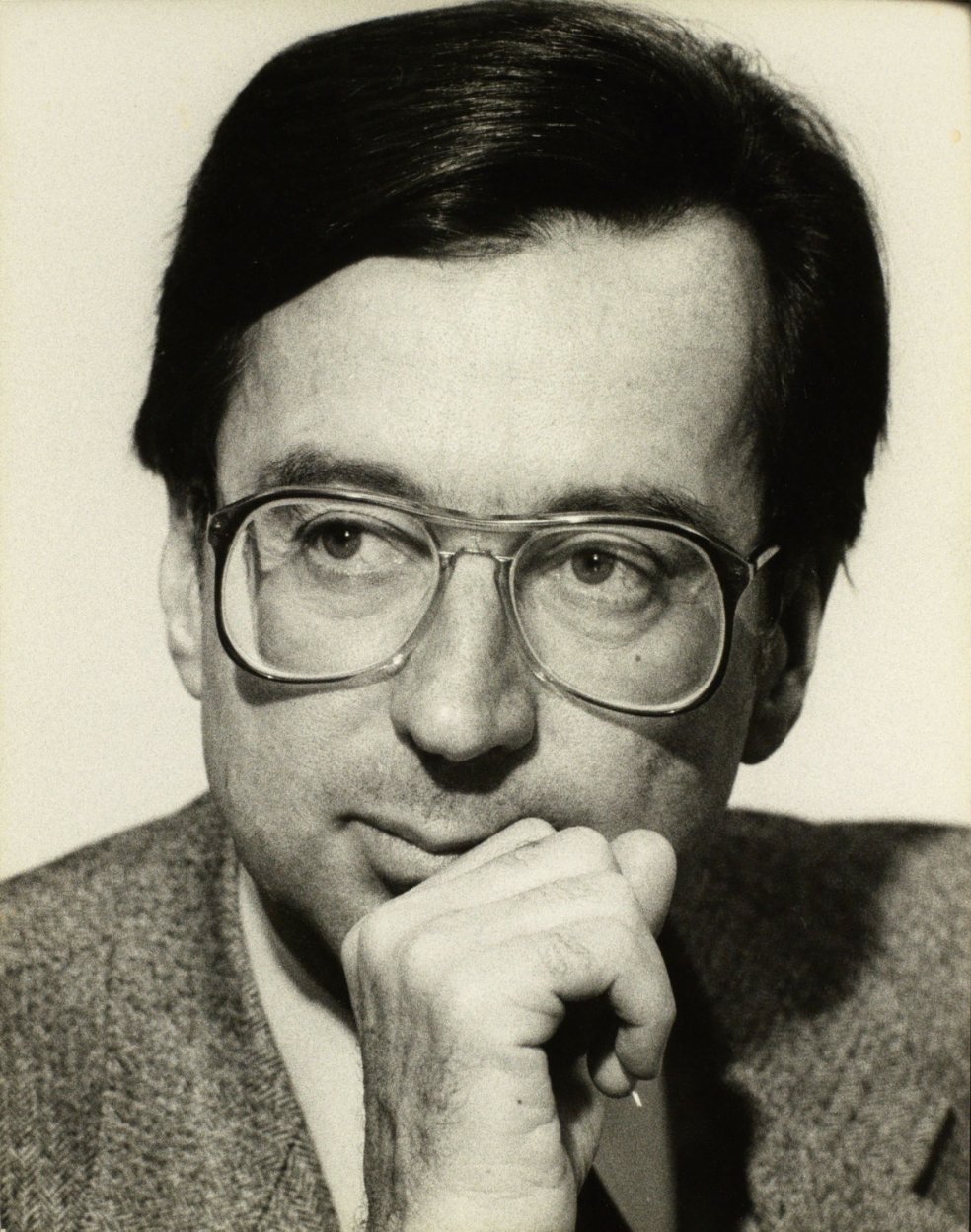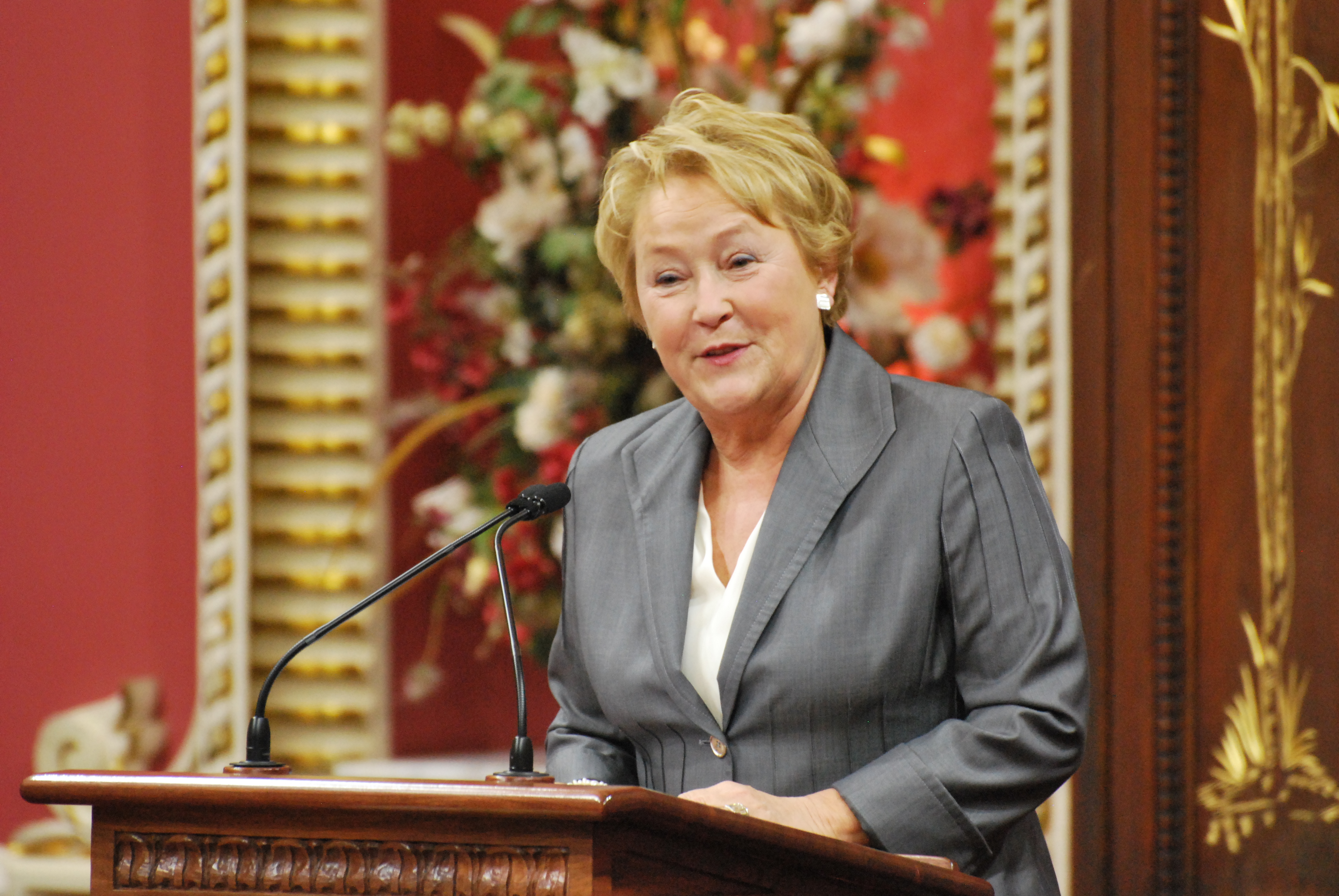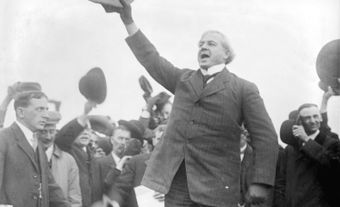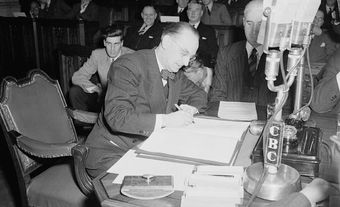In 1867, French Canadians in united Canada (territories covered by present-day Quebec and Ontario), helped create the Canadian Federation. In fact, there were four French Canadians (see Francophone) among the 36 Fathers of the Confederation. Since 1 October 2018, the first fixed election date in Quebec history, the province is led by a majority government. The premier is François Legault and the lieutenant-governor is honourable J. Michel Doyon (see also: New France; Seven Years’ War; Battle of the Plains of Abraham; Treaty of Paris 1763).

Provincial government structure
The National Assembly of Quebec (Assemblée nationale) is the legislative body of the province. Each of the 125 Members of the National Assembly (MNAs), elected according to the single-member plurality system, represents a constituency of approximately 40,000 voters. In the past, the province also had a Legislative Council (or Senate), but the latter was abolished in 1968.
Since establishing the Parliament in 1791, Quebec follows the British tradition whereby the majority party (with 63 or more elected MNAs) forms the government and its leader becomes the province's premier. The remaining elected MNAs form the opposition. The party which houses the second highest number of elected members becomes the Official Opposition and its leader, the leader of the Opposition.
Since 2013, the elections are held on a fixed date: every four years, on the first Monday in October. However, if he or she considers it justified, the premier can request the lieutenant-governor to dissolve the National Assembly before the end of term of the Legislature.
Chauveau, Ouimet, de Boucherville, de Lotbinière, Chapleau, Mousseau, Ross, Taillon, Mercier, Flynn, Marchand, Parent, Gouin, Taschereau and Godbout: 1867-1936
A minimal state
While French Canadians were a minority during the negotiations leading to the creation of Canada, they succeeded in imposing the idea of a federation to the anglophone centralists. As a result, the Constitution Act of 1867 was created to split the fields of jurisdiction into two areas: the economic sphere and the social and cultural sphere. The central government is responsible for sovereign duties (diplomacy, defence, national security, law and justice, currency, customs), banking, postal services, fishing and railways, among others. The provincial governments oversee health care, education, civil rights and public lands, to name a few fields.
When Quebec first became one of the four provinces of the Dominion of Canada, sources of direct revenue were scarce. By 1867, politicians from Quebec and other provinces were advocating “autonomism”, in other words, increased powers. They were moderately successful until 1960.
At first, Quebec’s financial freedom was largely reduced. Namely, the State’s expenses in 1900 totalled $4.5 million: 1,000 times less than the present-day amount in inflation-adjusted dollars. During the second half of the 19th century, the rise of ultramontane ideology (the Catholic Church’s interference in public affairs) and that of the classic liberal ideology (economic laissez-faire) led the provincial government to shift away from a large part of its social activities to the benefit of religious institutions. The Catholic Church was thus able to position itself strategically at the head of several schools, hospitals, recreational services and charitable organizations. This clericalism resulted in Quebec being called a “priest-ridden province” by English Canadians.
Over the last quarter of the 19th century, while industrialization and urbanization reshaped the population, Quebec’s government sought to prevent French Canadians from emigrating outside the province. To achieve this, the government promoted agriculture and encouraged young Québécois to explore lands that had not yet been cleared. Since the 20th century, the province has been working to attract foreign assets (from Europe and the Unite States) and help economic development by highlighting Quebec’s natural riches: pulpwood, mining products and hydroelectric energy.
Duplessis and Godbout: 1936-1959
Since the Patriotes movement, French Canadians dreamed of a different political arena from the one established by the traditional parties who, in their opinion, were too quarrelsome and corrupted. Honoré Mercier, Quebec’s premier from 1887 to 1891, had claimed that he would have wanted the interests of the country to be placed above those of the party.
Duplessism
This dream made its way back into the political scene in Quebec during the Great Crash of 1929 which struck the province with full force. By the 1935 elections, the Liberal Party, in power since 1897, had been weakened by the strategic alliance between the Conservative Party under Maurice Duplessis and the Action libérale nationale, a new party formed by dissident members of the Liberal Party. The alliance became a new party named the Union nationale and was led by Maurice Duplessis. It rose to power in 1936 and remained there until 1960, except for the period between 1939 and 1944. Quebec’s time under the Union nationale regime became known as the Grande noirceur (Great Darkness).

Maurice Duplessis maintained the political ways of the previous liberal governments, but he put more emphasis on autonomism. He drew closer to the Catholic Church and to right-wing nationalists. He opposed federal intervention in provincial matters. For example, in 1954, he passed the Provincial Income Tax Act to create some tax room for Quebec. Four years prior, the fleurdelysé flag was adopted by Quebec as its provincial flag, under a Ministerial Order.
Did you know?
All Canadian women did not acquire the right to vote simultaneously. The Constitutional Act of 1791 granted some landowners and tenants the right to vote. The Act referred to eligible voters as “persons”, making no distinction between male and female constituents. This oversight allowed women in Quebec who met the stipulated requirements to vote until 1849, when they were formally forbidden from doing so. In 1892, the National Assembly passed legislation allowing widows and single land-owning women to vote at municipal and school elections. In 1918, women gained the right to vote in federal elections. In Quebec, the Alliance canadienne pour le vote des femmes au Québec (Canadian Alliance for the Women’s Vote in Québec) and the Ligue des droits de la femme (League for Women’s Rights) took matters into their own hands. Led by Thérèse Casgrain, the battle endured until victory on 25 April 1940. However, Indigenous women had to wait until 1960 before they could vote at the federal level, and until 1969 at the provincial level. Today, any Canadian citizen aged 18 or above who has lived in Quebec for at least six months can vote in Quebecois elections.
Sauvé, Barrette, Lesage, Johnson (father), Bertrand, Bourassa and Lévesque: 1959-1981
A lengthy Quiet Revolution
The death of Maurice Duplessis in 1959 and the election of Jean Lesage in 1960 marked the beginning of the Quiet Revolution (see also Women and the Quiet Revolution). The nationalist politicians steered away from the French-Canadian angle and defined Quebec as the main target of their efforts, including international relations (namely with France).
Quebec’s politicians welcomed Keynesian economics. In other words, they encouraged the State’s active intervention in the economy and monetary policies. Many public institutions and social policies were created, including CEGEPs (public schools which provide students with the first level of post-secondary education), the Caisse de dépôt et placement du Québec, Télé-Québec, Hydro-Québec and the Régie de l’assurance maladie. The State’s budget skyrocketed: it quadrupled over the span of a decade (1959-1969). Quebec, until then the most right-winged province in Canada, became the most left-winged. A moral revolution transformed Quebec’s cultural landscape.

The election of the Parti Québécois in 1976 confirmed the triumph of the nation state and the welfare state. In 1977, Bill 101 (Charte de la langue française) declared French the official language of Quebec. During its first term, the Parti Québécois enacted other important laws, namely the Act to Govern the Financing of Political Parties. During the referendum on the sovereignty-association of 1980, the No camp won with 60 per cent of the votes.
Lévesque, Johnson, Bourassa, Johnson (son), Parizeau, Bouchard, Landry and Charest: 1981-2005
Neoliberal adjustments
The unilateral patriation of the Constitution of 1982 gave rise to fierce constitutional debates. Many federalist Quebecois politicians viewed the failure of the Meech Lake Accord as the result of treason. In the second referendum of 1995, the Yes camp was narrowly defeated. Jacques Parizeau, premier at the time, expressed his outrage the same night: “It’s true that we were defeated. By what, really? Essentially, by money and by ethnic votes.”

The 1981-1982 recession exacerbated the economic decline of Quebec because the province had relied on industries and manufactures which were now downgraded. More than ever, Quebec was perceived as the province most overcome by taxes and debt.
In 1983, René Lévesque’s government took measures to rebuild the province’s public finances. Robert Bourassa’s rise to power in 1985 confirmed this milestone. Bourassa appointed a previous upper-rung leader of supermartket chain Provigo as chair of the Conseil du trésor. The latter believed that the government should immediately slash spending, like what was being done under Ronald Reagan in the United States and under Margaret Thatcher in Great Britain. Thus sprung the term “État-Provigo” (“Provigo State”), referring to the government’s will to manage the State as an entrepreneur would a business.

While establishing new social policies (grants for childcare centres, public pharma care plan), premier Lucien Bouchard (1996-2001) continued with efforts to improve public finances.
In 2003, Jean Charest was elected after promising to “re-engineer” the State. His government committed to both decrease the state’s interventions and increase the state’s efficiency. If it failed, Quebec would face economic catastrophe. The collective Pour un Québec lucide (“For a Clear-Eyed Vision of Quebec”) manifesto was published in 2005 and opens with the line: “With demographic decline and global competition threatening our future, Québec cannot allow itself to be the status quo republic.”

Charest, Marois, Couillard and Legault: 2005-2018
Peaceful management
During the civil society outcry, Jean Charest withdrew or moderated his reform propositions. Over almost a decade (2003-2012), he simply maintained a healthy management of the province. One of the main concerns of the government was the reform of the health care system, considered expensive and inefficient, because it was responsible for an ageing society.
While Jean Charest was in power, corruption allegations resounded more and more clearly. In 2004, the federal government established the Gomery Inquiry whose mandate was to investigate public activities and fraud cases linked to the sponsorship program the federal government created following the 1995 referendum. For its part, the provincial government created the Bastarache Commission (an inquiry commission on the process for appointing judges) in 2010 and the Charbonneau Commission (an inquiry commission charged with investigating collusion and corruption suspicions in the construction sector). In 2010, the Maclean’s magazine sported the front page headline “The most corrupt province in Canada […] Why so many political scandals happen in Quebec”. The Quebec Press Council blamed Maclean’s for lacking in rigour and spreading biases.
The Maple Spring of 2012 – the longest student strike of the history of North America – forced the liberal government to call for an early election during which it was defeated by the Parti Québécois. However, the latter formed a minority government under Pauline Marois, first female premier of Quebec. Its mandate was marked by the debate on adopting the Quebec Charter of Values (an aborted attempt), a long discussion about reasonable accommodation launched in 2006.

Eighteen months later, in 2014, Pauline Marois’ government was defeated and the liberal party under Philippe Couillard took over. The latter resumed his liberal predecessors’ efforts and focused on improving access to health care and accelerating the deficit reduction.
Legault: 2018-
During the 2018 elections, the traditional parties’ support collapsed and both the Parti Québécois and the Parti libéral obtained the worst numbers in their respective histories. Meanwhile, two new parties made significant breakthroughs: Québec solidaire, a left-wing party founded in 2006, secured ten seats; Coalition avenir Québec (CAQ), a centre-right party founded in 2011, secured 74 seats and formed a majority government.
Under the CAQ government, a number of nationalist laws touching on identity politics were passed. These include the Act Respecting the Laicity of the State (see Bill 21) and Bill 96. Bill 21 prohibits persons in positions of authority (namely judges, prosecutors, police officers and public school teachers) from wearing religious symbols while exercising their functions. The government also pushed an important reform to the Charter of the French Language through Bill 96. The latter limited the number of students able to study in anglophone CEGEPs. It also imposed French as the common language at work to medium-sized companies. Moreover, it made French the exclusive language used by the Quebec government. Controversially, both Bill 21 and Bill 96 employ the notwithstanding clause to bypass certain rights in the Canadian Charter of Rights and Freedoms.

The CAQ's handling of the COVID-19 pandemic was controversial. Compared to the rest of Canada, Quebec suffered the highest number of deaths linked to COVID-19. For some critics, Legault's government reacted to the pandemic through particularly heavy-handed measures. It implemented multiple lockdowns and a vaccine passport for patrons accessing certain events and restaurants. Perhaps most controversially, the government introduced two curfews during the pandemic. Other critics felt that the government was not doing enough, notably by reopening schools at certain points of the pandemic. The management of long-term care centres, or CHSLDs, early on in the pandemic was also heavily criticized.
Since its election, the government under François Legault has continued to top the polls. On one hand, support for sovereignty is on a consistent decline (from 50 per cent in 2005 to less than 30 per cent in 2019) and Quebec’s population is seemingly becoming weary of constitutional debates. The CAQ’s autonomist ideology, which promotes the Quebecois nation without advocating independence, seems to befit the present context. On the other hand, the provincial economy is experiencing a favourable cycle. Unemployment has plummeted to its lowest rate in 50 years and the State is reading record budget surpluses.
The 2022 campaign debate mainly focused on the immigration and French language, the health system and inflation. François Legault’s CAQ was the undisputable winner of the October 2022 elections, despite some critical voices who deemed the party’s election campaign rather weak. The CAQ won almost 41 per cent of the vote and elected 90 members of the National Assembly out of 125. This is the best elections result of a political party in Quebec’s recent history. Compared to the CAQ, the Quebec Liberal Party elected only 21 members with 14.4 per cent of the vote while the Parti Québécois barely elected 3 members with 14.6 per cent of the vote. Québec solidaire managed to get 11 members elected, obtaining 15.5 per cent of the vote. Éric Duhaime’s Conservative Party of Quebec received 12.9 per cent of the vote but did not get any seat in the National Assembly.

 Share on Facebook
Share on Facebook Share on X
Share on X Share by Email
Share by Email Share on Google Classroom
Share on Google Classroom



